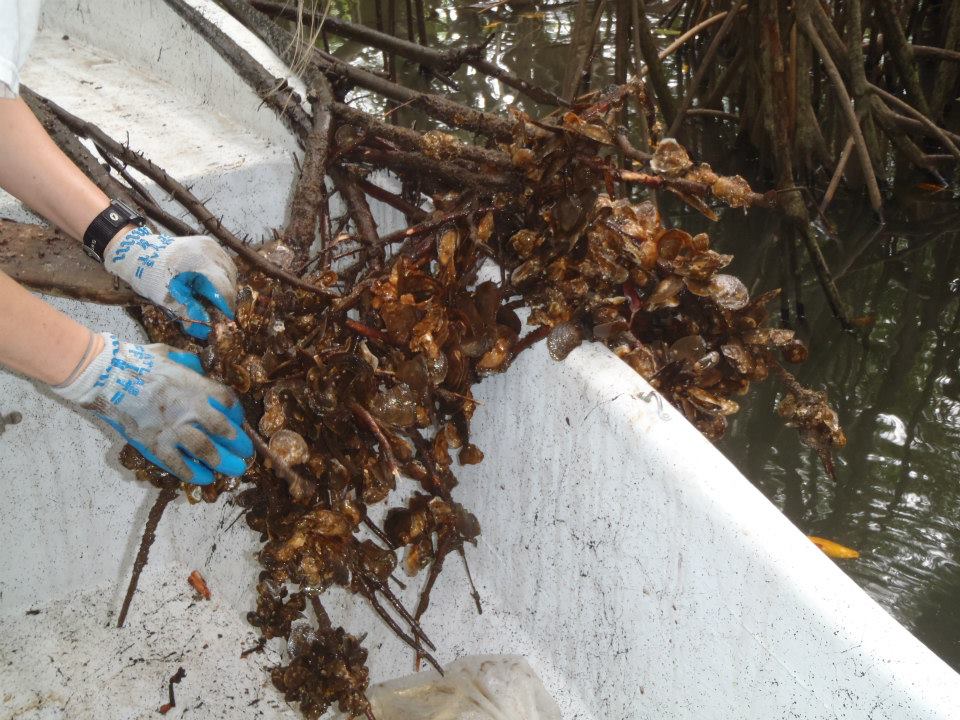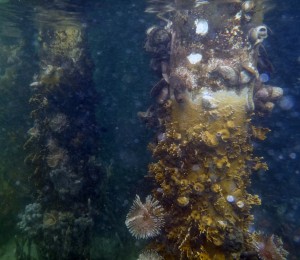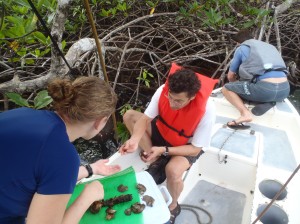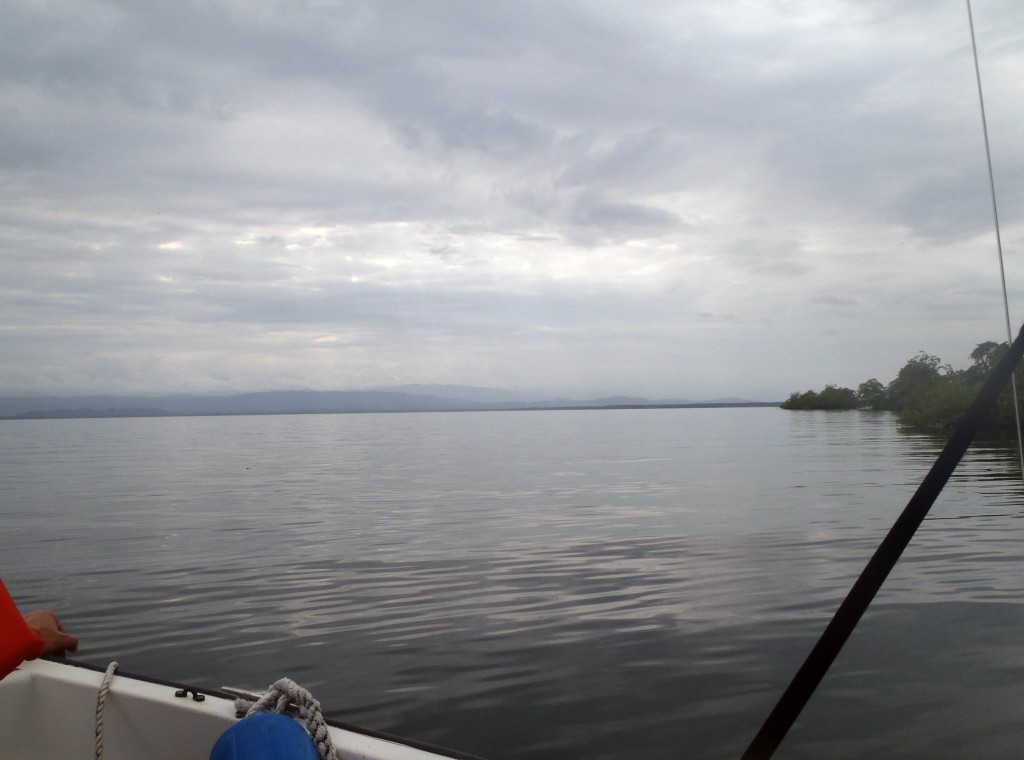by Katrina Lohan
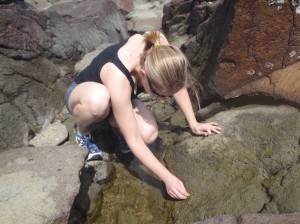
Katrina Lohan scrapes mud and algae off a rock at Punta Culebra. Later, Lohan will use genetic tools to see what protozoan parasites are inside that sample.
(Kristina Hill)
During the seven months that I have been a post-doctoral fellow at the Smithsonian, I have been intellectually challenged over and over again and I’m loving it! One thing that I have had to think about is what direction I want my future research to go and how my current fellowship project is helping to lead me in that direction. Through multiple conversations with both of my advisors, Dr. Robert Fleischer at the
National Zoo and Dr. Gregory Ruiz at the
Smithsonian Environmental Research Center, I have been able to hone in on my particular research interests and figure out how to alter some aspects of my fellowship project to better incorporate them.
I have realized that I am particularly interested in disease reservoirs. Unfortunately, this term is difficult to define. But basically, a disease reservoir can be anything (living or nonliving) where a disease-causing organism can survive outside of its host. As part of my fellowship project, I had already intended to use genetic tools to look for protozoan parasites in oysters and water samples. After further consideration, I have decided to also use genetic tools to look for parasites in other environmental reservoirs. It’s hard to predict what environmental reservoirs would be best to collect, so I was advised to choose a site, collect a few samples and just see what parasites are present. Then, I can use those results to help me decide how I should conduct a more extensive sampling scheme in the future.
With that in mind, Kristy and I headed to Punta Culebra to collect some reservoir samples. I was really excited, even though I wasn’t entirely sure how or what I was going to collect. But I was confident that I would know when I saw it. I decided to take three samples from five different sites along the rocks, roughly matching the sites where we had previously collected oysters. At low tide there are small tide pools within the rocks. I decided to collect from within these pools. In the end, I took three samples from each site. One was a sediment sample, which ranged from fine muddy sediments to larger coarse sediments with lots of shell bits. The second sample was from the living material that blanketed the rocks, which was probably a combination of mud, bacteria and turf algae. The third sample I took was a sample of a distinct clump of turf algae. I am really excited to see what protozoans I find!
More stories from Panama >>
